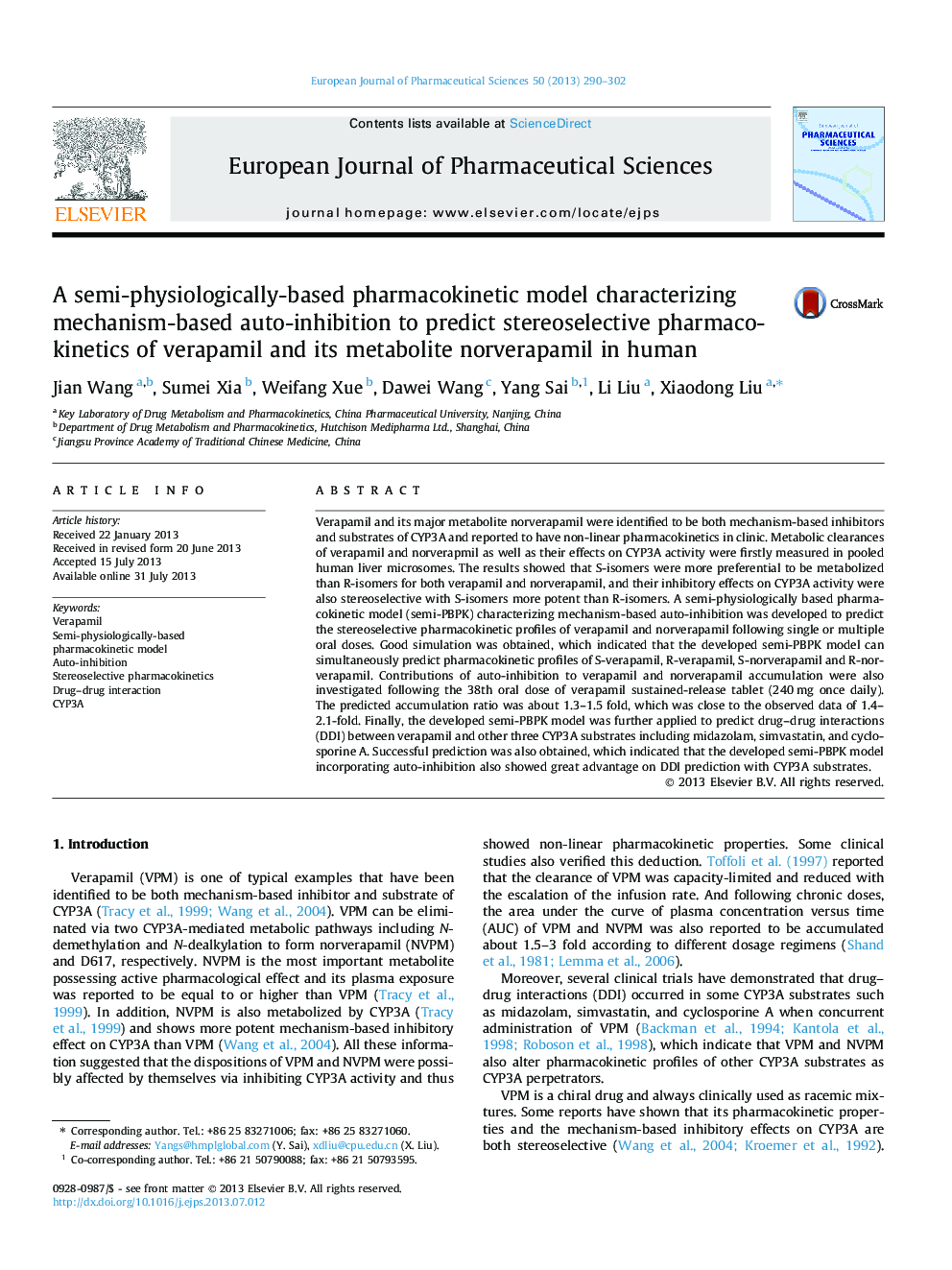| Article ID | Journal | Published Year | Pages | File Type |
|---|---|---|---|---|
| 2480711 | European Journal of Pharmaceutical Sciences | 2013 | 13 Pages |
Verapamil and its major metabolite norverapamil were identified to be both mechanism-based inhibitors and substrates of CYP3A and reported to have non-linear pharmacokinetics in clinic. Metabolic clearances of verapamil and norverapmil as well as their effects on CYP3A activity were firstly measured in pooled human liver microsomes. The results showed that S-isomers were more preferential to be metabolized than R-isomers for both verapamil and norverapamil, and their inhibitory effects on CYP3A activity were also stereoselective with S-isomers more potent than R-isomers. A semi-physiologically based pharmacokinetic model (semi-PBPK) characterizing mechanism-based auto-inhibition was developed to predict the stereoselective pharmacokinetic profiles of verapamil and norverapamil following single or multiple oral doses. Good simulation was obtained, which indicated that the developed semi-PBPK model can simultaneously predict pharmacokinetic profiles of S-verapamil, R-verapamil, S-norverapamil and R-norverapamil. Contributions of auto-inhibition to verapamil and norverapamil accumulation were also investigated following the 38th oral dose of verapamil sustained-release tablet (240 mg once daily). The predicted accumulation ratio was about 1.3–1.5 fold, which was close to the observed data of 1.4–2.1-fold. Finally, the developed semi-PBPK model was further applied to predict drug–drug interactions (DDI) between verapamil and other three CYP3A substrates including midazolam, simvastatin, and cyclosporine A. Successful prediction was also obtained, which indicated that the developed semi-PBPK model incorporating auto-inhibition also showed great advantage on DDI prediction with CYP3A substrates.
Graphical abstractFigure optionsDownload full-size imageDownload high-quality image (134 K)Download as PowerPoint slide
